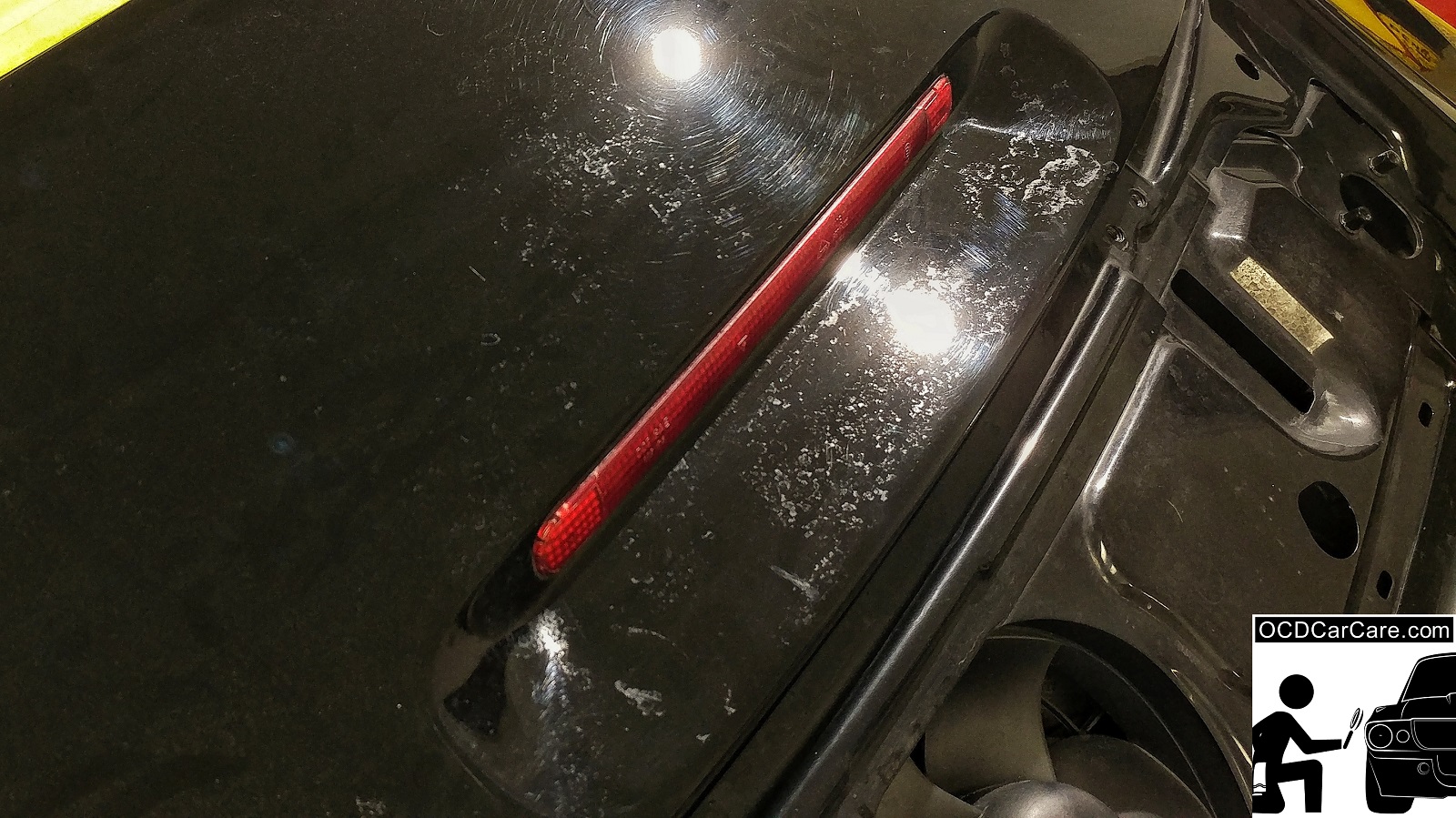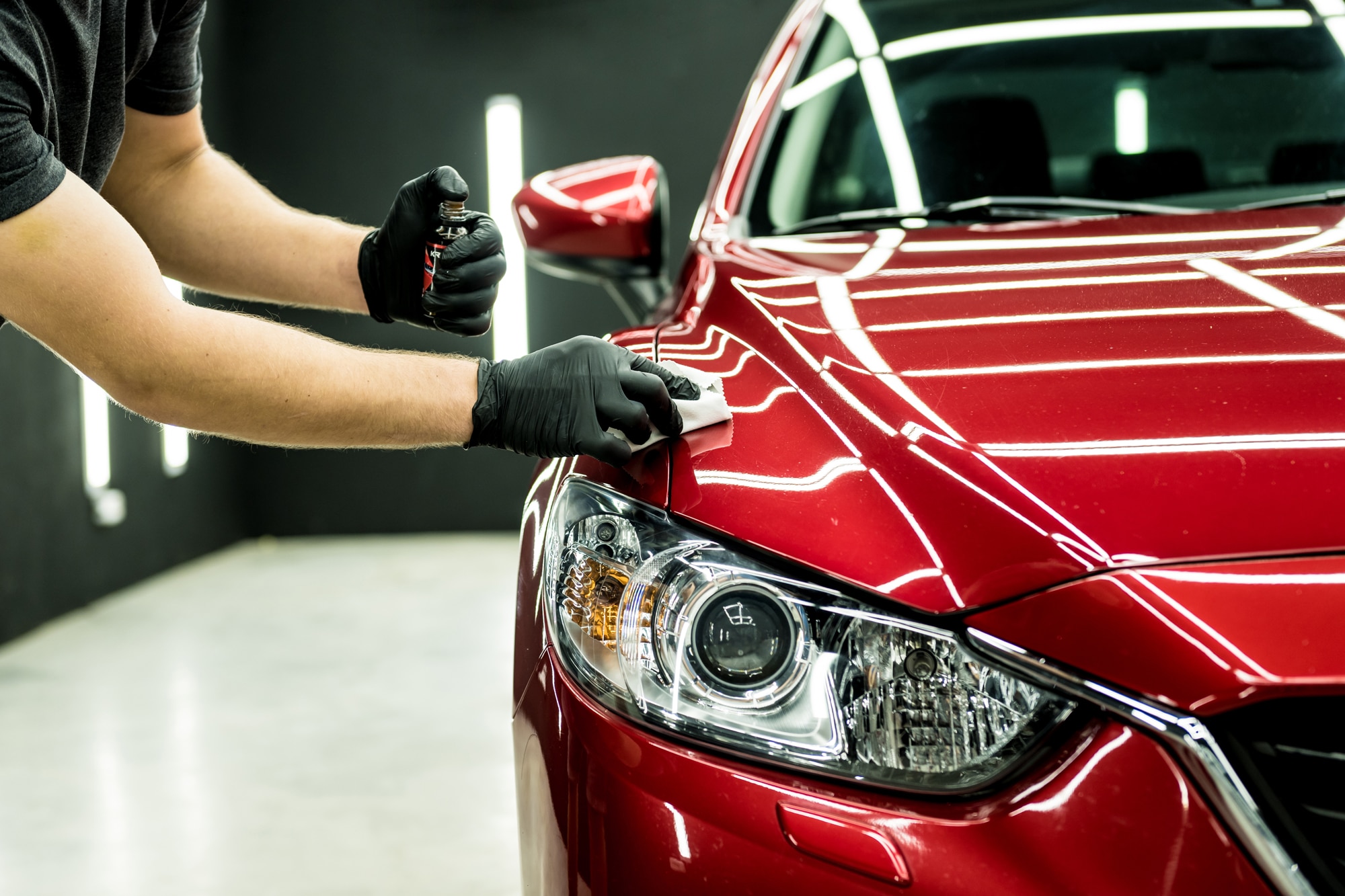Exactly How Ceramic Coating Philadelphia Maintains Your Car Looking New for several years
Exactly How Ceramic Coating Philadelphia Maintains Your Car Looking New for several years
Blog Article
Why Ceramic Covering Is the Ultimate Solution for a Remarkable Complete
Ceramic finish has become a leading option for those looking for a perfect finish for their lorries, thanks to its exceptional longevity and protective functions. This innovative liquid polymer not just bonds perfectly with manufacturing facility paint however additionally supplies a formidable barrier versus usual hazards such as scratches, UV rays, and toxic wastes. Its hydrophobic buildings streamline maintenance while enhancing visual charm. Understanding exactly how this modern technology compares to conventional methods and discovering its application nuances can reveal even a lot more about its value. What factors absolutely set ceramic finish apart?
What Is Ceramic Finishing?

When applied appropriately, ceramic layer develops a hydrophobic surface area that repels water and dirt, making it much easier to cleanse and keep. Unlike standard waxes or sealers, which usually supply short-lived protection, ceramic coatings can last for several years, depending upon the item quality and application method. The process of applying ceramic coating calls for precise preparation, consisting of thorough cleansing and often repaint improvement, to make certain optimum bonding and effectiveness.
Ceramic coverings are not restricted to automotive surface areas; they can additionally be used on numerous products, consisting of glass, metal, and plastics, providing a flexible solution for improving protection. On the whole, ceramic finishing represents a substantial innovation in surface area defense innovation, integrating both functional and aesthetic benefits for a wide array of applications.
Benefits of Ceramic Finish
While several surface defense choices exist, the benefits of ceramic layer stand out because of its one-of-a-kind residential or commercial properties and resilient efficiency. One of the key advantages is its extraordinary durability. Ceramic Coating Philadelphia. Unlike typical wax or sealants that call for regular reapplication, ceramic finishings provide a resistant layer that can last for a number of years, dramatically reducing upkeep initiatives
An additional noteworthy benefit is improved protection versus ecological pollutants. Ceramic coatings develop a hydrophobic surface that drives away water, dust, and various pollutants, making it simpler to clean up. This attribute not only maintains the car's look however additionally decreases the danger of rust and oxidation, specifically in extreme climate conditions.
Moreover, ceramic finishings offer exceptional resistance to UV rays, protecting against fading and destruction of paint gradually. This UV protection is critical for maintaining the aesthetic value of surfaces and lorries revealed to direct sunlight.
Additionally, the glossy finish attained with ceramic finishing boosts the total aesthetic appeal, giving surface areas a showroom-quality sparkle. On the whole, ceramic finishes stand for a significant improvement in surface area protection technology, offering enduring benefits that satisfy both functional and aesthetic requirements.
How It Functions
Comprehending the science behind ceramic coatings discloses how they provide such exceptional defense and durability. At its core, a ceramic coating is a liquid polymer that chemically bonds with the car's manufacturing facility paint. This bonding creates a safety layer that is both oleophobic and hydrophobic, repelling water, dust, and oil. The main part of many ceramic coatings is silicon dioxide (SiO2), which is acquired from quartz. This substance adds to the finish's solidity and resistance to scratches, UV rays, and environmental impurities.
The application process involves numerous actions, consisting of surface area prep work, which is essential to accomplishing optimum bond. As soon as used, the finishing undertakes a treating process, throughout which it hardens and develops a semi-permanent bond with the paint surface. This bond is what identifies ceramic coatings from conventional waxes and sealers, giving a longer-lasting protective obstacle that can sustain for years.
Additionally, the density of the layer can enhance its protective high qualities, making certain that it can hold up against extreme conditions. Eventually, the scientific research of ceramic coverings combines innovative materials with ingenious application strategies to deliver an exceptional level of defense and aesthetic improvement for vehicles.
Contrast With Traditional Techniques
The advantages of ceramic coverings become especially noticeable when compared to conventional paint protection techniques such as waxes and sealants. While waxes provide a momentary sparkle, normally lasting a couple of weeks to a pair of months, ceramic layers supply a lasting protective layer that can withstand for numerous years. This longevity significantly reduces the regularity of reapplication, making ceramic coverings a much more economical solution gradually.
Furthermore, traditional approaches usually require extensive preparation and multiple applications to accomplish an acceptable level of protection. In comparison, ceramic layers bond at useful source a molecular degree with the vehicle's surface area, creating a durable shield against ecological pollutants like UV rays, acid rainfall, and roadway salts. This bond boosts the automobile's resistance to scrapes and swirl marks, which are common with typical waxes and sealers.
In addition, the hydrophobic buildings of ceramic coatings fend off water and dust, leading to less complicated cleansing and upkeep. In comparison, wax and sealant-treated surface areas can draw in crud, necessitating even more constant washing - Ceramic Coating Philadelphia. In general, ceramic layers not only give remarkable security but also supply a more visually appealing and long-lasting coating, establishing them as the favored choice for critical vehicle proprietors
Application and Maintenance Tips

Making use of a foam applicator, use the layer in little areas, complying with the producer's guidelines pertaining to thickness and overlap. Permit sufficient treating time between coats, commonly 24 hours, to make sure correct bonding. After application, it is vital to avoid exposure to water or extreme components for at the very least a week to site here enable the layer to totally treat.
For maintenance, clean the car frequently with pH-balanced soaps and stay clear of rough products. Touchless cars and truck laundries are advised to lessen scraping. Additionally, using a ceramic upkeep spray can improve the layer's hydrophobic click resources properties and longevity. Routine inspections for any type of signs of wear will help maintain the covering's integrity and protect that pristine surface.
Conclusion
In verdict, ceramic finish arises as a superior alternative for attaining a flawless automotive coating. By developing a durable bond with manufacturing facility paint, ceramic coating properly shields against scratches, UV rays, and environmental impurities.

Report this page